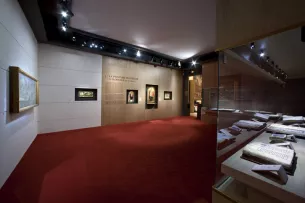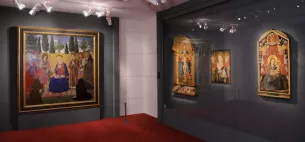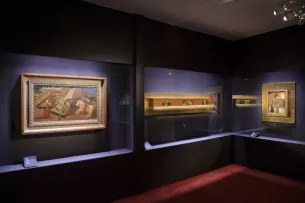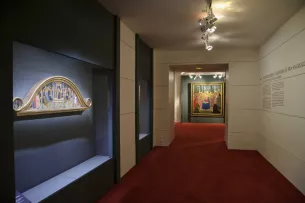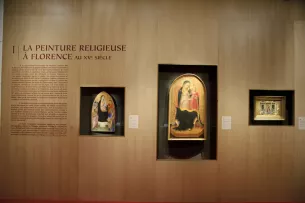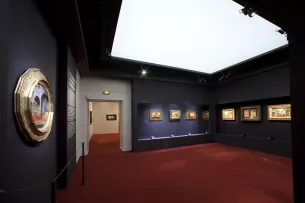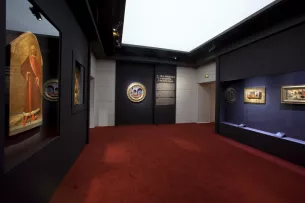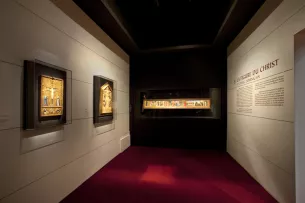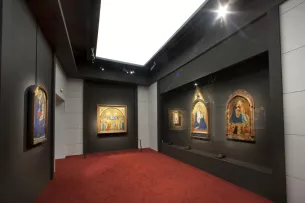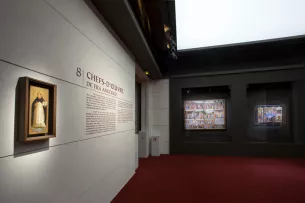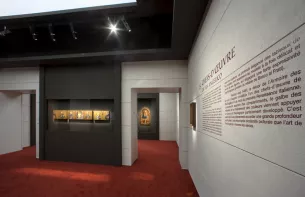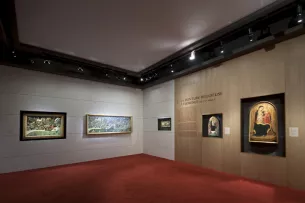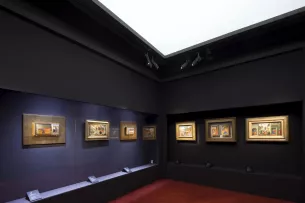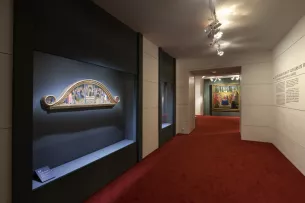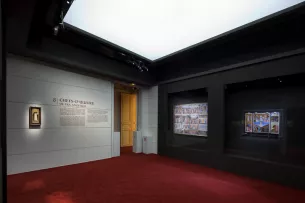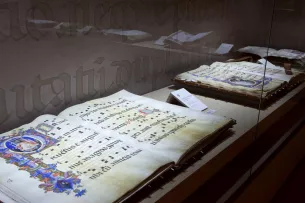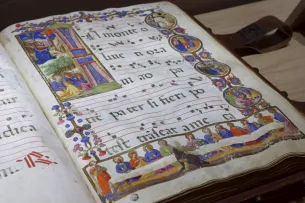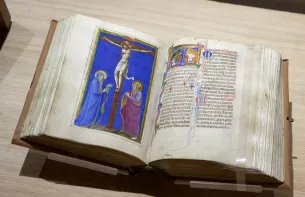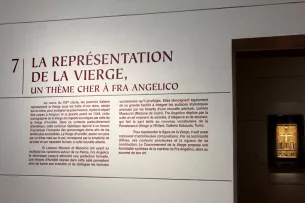Le Nélie will exceptionally close at 6pm on Saturdays April 5 and 12.
Exhibition
Fra Angelico
and the Masters of Light
The exhibition of the Jacquemart-André Museum will present nearly 30 major works by Fra Angelico and 20 panels painted by some of his prestigious contemporaries, such as Lorenzo Monaco, Masolino, Paolo Uccello, Filippo Lippi and Zanobi Strozzi.
The event: this dedicated Fra Angelico is a French museum first
Fra Angelico (c.1400-1455) was a major player in Florence’s artistic and cultural revolution at the beginning of the 15th century. His work combines the golden lustre inherited from Gothic style with a new understanding of perspective. He initiated the artistic movement which specialists have named the “Peintres de la Lumière” (painters of light). Alongside his works will be hung those of renowned painters who significantly influenced his work, such as his teacher Lorenzo Monaco (1370-1424), Masolino (1383-c. 1440) and Paolo Uccello (1397-1475), as well as artists that he inspired, such as Filippo Lippi (1406-1469) and Zanobi Strozzi (1412-1468).
The “Fra Angelico and the Masters of Light” exhibition is being held in partnership with major Italian museums – including the Uffizi Gallery – and internationally famous collections.
Major works
Fra Angelico was an artist of many talents, and he produced masterpieces on a diverse range of materials. Although he is best known for the frescos which decorate the San Marco convent in Florence, he was just as accomplished in the delicate arts of illumination and painting on wood, as the exhibition will show.
Panels and richly ornate works such as the Last Judgement triptych (from the Corsini Gallery in Rome), La Madone di Cedri (San Matteo National Museum, Pisa) and one of the panels from L'armadio degli argenti, (San Marco Museum, Florence) will be displayed at the Jacquemart-André Museum. These works demonstrate Fra Angelico’s love of elegant, contrasting colours. The subtle tones he chooses enhance the elegant figures he depicts from Biblical episodes or the lives of the saints.
A video shown at the entrance to the exhibition will allow visitors to view his finest work - the frescos adorning the cells of the San Marco monastery in Florence.
What makes Fra Angelico stand out within the first Florentine Renaissance
Fra Angelico was a pupil of Lorenzo Monaco and, like him, a monk. He learned his art in Florence, a city saturated with the International Gothic style. This refined style, which combined influences from Northern Europe and Italy, inspired Fra Angelico to create works with deep spiritual meaning.
Fra Angelico’s choice of subjects conformed to the religious pictorial tradition, but he reinterpreted these subjects throughout his career. For example, his many variations on the theme of the Humble Virgin demonstrate his ability to integrate daring stylistic innovations promoted by supporters of the new artistic movement. He was fully aware of the innovations of the Masters of his time, such as Masolino and Uccello, whose work featured a more realistic representation of the world with a focus on the human figure and a new mastery of the rules of perspective.
Although Fra Angelico adopted these new ideas into his work, he stayed faithful to the principles of medieval religious paintings: his works retained a didactic function, strengthened by the mystical force he attributes to light. At the heart of the first Florentine Renaissance, which marked a turning point in European art, Fra Angelico had an important and unique place.
The team
Giovanna Damiani, a specialist in the art of the Middle Ages and modern art, has a degree in archaeology and history of art from the University of Siena. She also has a Master’s degree in public and institutional communication and specialises in the digital archiving of cultural heritage.
She is currently the Superintendent of the Polo Museale Veneziano and of the historical, artistic and ethno-anthropological heritage of Parma and Piacenza.
From 1980 to 1998 she taught several classes at the University of Siena, particularly in the field of the history of art and the application of IT in analysing and managing cultural heritage.
In 1990 she joined the Ministry of Cultural Heritage and Activities where she held several positions in commissions and working groups. She was particularly involved in the MINERVA project.
She has conducted several restoration works of paintings, miniatures, sculptures and works of art by Agnolo Gaddi, Fra Angelico, Fra’ Bartolomeo, Antonio Sogliani, Correggio, Giovan Battista Naldini, Pietro Benvenuti, Giuseppe Bezzuoli, Giovanni Duprè, Giovanni Fattori, Medardo Rosso, Bruno Innocenti and Felice Carena, as well as fabrics and tapestries from the 11th to the 18th century, including the Sacred Paraments of Bernardo degli Uberti (11th-12th century), ivories, majolicas and lapidary items.
Nicolas Sainte Fare Garnot, an art historian specialising in seventeenth-century French painting, has been curator at the Jacquemart-André Museum since 1993. Since his appointment, he has reorganised the distribution of the collections according to the original programme and has initiated various restoration and inventory campaigns. Together with Culturespaces he has helped to create a new dynamic within the Museum by bringing his scientific approach to bear on temporary exhibitions whose subjects offer an opportunity to get to know the artists contained in the permanent collections.
Scenography
Hubert Le Gall, born in 1961, is a French designer, creator and sculptor of contemporary art. His work has formed the subject of numerous exhibitions throughout Europe. Since 2000 he has produced original scenographies for exhibitions.

